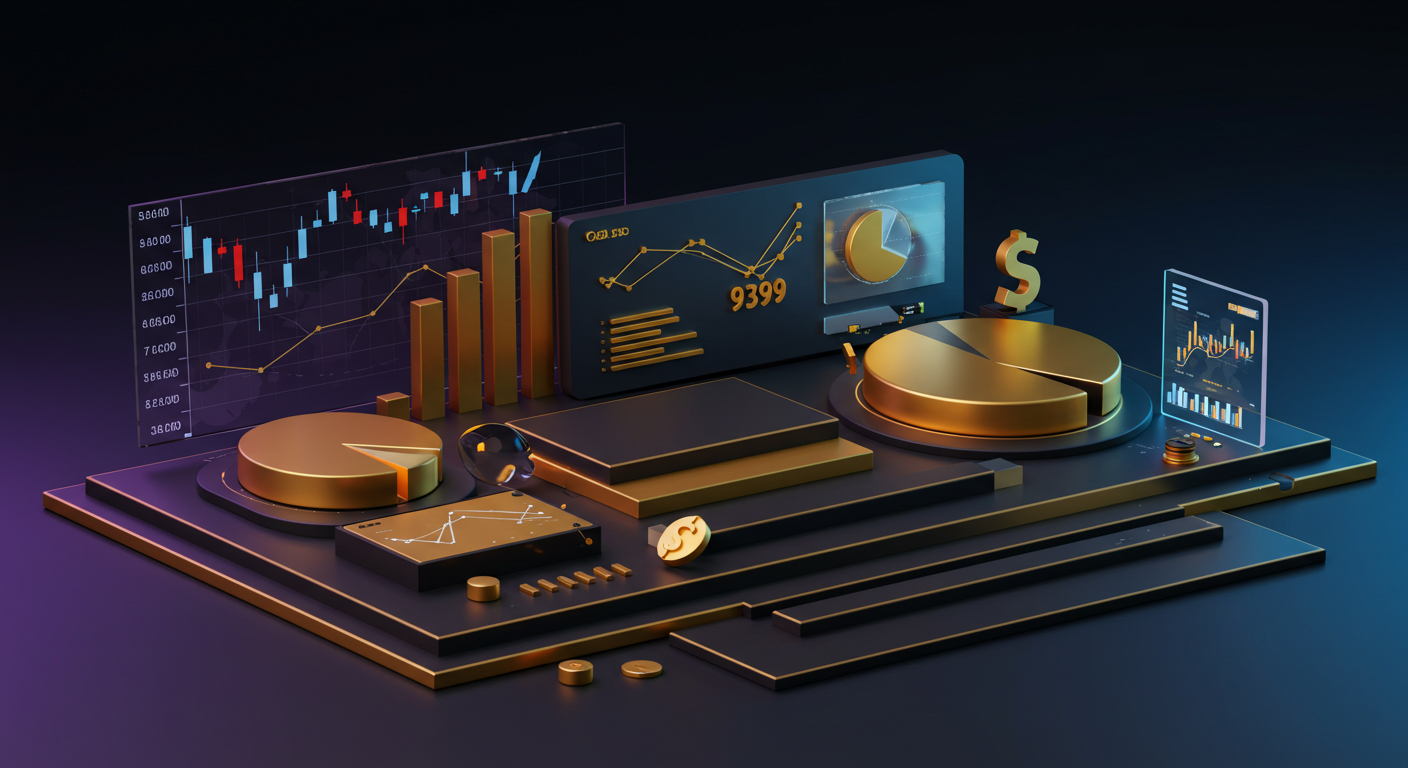
Gold prices are steadily increasing amidst ongoing market uncertainty, with the precious metal currently valued at approximately $3,485. This surge is intensified by global economic tensions and geopolitical factors affecting the dollar and international trade relations. The imposition of tariffs by the US, particularly targeting Japan and China, contributes to market anxiety. Additionally, the strategic use of the yuan by China places further strain on global economies.
The search for safe investments remains challenging as traditional options like US Treasuries become less reliable, with 30-year yields approaching 4.91%. Amidst these developments, gold continues to attract attention due to its perceived stability. This trend is supported by central banks accumulating gold and ETF holdings still adjusting to current price levels.
Market Dynamics And Gold Trends
Market dynamics show no straightforward conclusion, as factors influencing gold prices operate simultaneously to support its value. The precious metal appears on track to reach $3,500, spurred by these complex, interwoven factors. With no clear resolution in sight, predicting the future price movements of gold remains a complex task. The interplay of these global economic forces suggests a sustained interest in gold as a secure asset.
In plain terms, what’s happening here is a rise in gold’s appeal as a shield against erratic financial movements. At around $3,485 per ounce, it’s obvious now that rising tensions—from tariff shifts to unpredictable foreign exchange strategies—are encouraging renewed demand for assets that feel less exposed. More specifically, actions by large economies are adding fuel to the current climate of economic discomfort, and this discomfort is pushing investors towards something they expect to hold its value.
By imposing targeted tariffs, especially towards major export-driven nations, the US is unsettling long-standing trade flows. That alone brings uncertainty, but add to that the choices made by China regarding the yuan, and we see a deeper question emerging about global financial stability. Combined, these influences are pushing gold higher.
Now consider bond yields, particularly the 30-year US Treasury stalling near 4.91%. Normally thought of as a refuge in times of turbulence, such yields no longer offer the same reassurance they once did. We’ve seen diminishing confidence in returns from traditional government debt as inflationary concerns linger and central banks keep their options open. That hesitancy has a direct effect on portfolio allocation and creates a situation where gold, despite offering no yield itself, becomes comparatively more attractive.
What stands out is not a single shock or one-off event, but a growing mixture of economic frictions. Central banks, seeking to diversify their holdings, continue to accumulate gold, largely unaffected by short-term price rallies. In parallel, ETF holdings, which had previously undergone light trimming, appear to be adjusting in anticipation of continued momentum. These two movements together hint at underlying demand stability, which bolsters the case for sustained or even strengthening bull sentiment.
Pricing Dynamics And Market Factors
Pricing appears more technically determined now, with algorithms and quantitative models adjusting positions based on external macro triggers. That adds a layer of short-term noise to the market, but the broader direction doesn’t yet seem compromised. Traders would have noted that the psychological level of $3,500 draws closer. It’s not just a round number—it reflects the market’s composite expectation under the current strain.
With so many competing forces and limited clarity from monetary authorities, attempt to time any top or retracement is a gamble on the next global headline. What we find more effective is measuring momentum by weighing institutional moves, shifts in ETF flow, and persistent currency adjustments. Be less reactive to headline-driven spikes and place greater emphasis on whether the underlying thesis—that gold remains a safe allocation in a fractured market—continues to hold up under pressure.
What Powell said last week about staying “data-dependent” barely moves the needle. Instead, we’ve concentrated on the broader reaction among central institutions. Their actions speak louder than tentative speeches. If they’re still buying, and the data keeps confirming doubt in other instruments, that tells us where sentiment really stands.
Volatility, while not extreme, does feel more jumpy—especially given the low liquidity in some gold derivatives lately. One poor liquidity session and pricing can snap either way. Expect more of that unless volume stabilises. That creates potential for option premiums to remain elevated, particularly on out-of-the-money calls. Adjusting positioning based on changes in volume-weighted average price (VWAP) could help maintain consistency in directional strategies.
We’re watching for shifts in the yen and the yuan more closely than usual this quarter, because each tug on their values can change expectations about trade balances, monetary response, and cross-border capital flow. All of these feed indirectly into gold, even when not immediately visible. Recently, PBoC reserves data has shown trace tightening, which deserves attention. If it continues next month, that might call for delta-adjustment across longer-dated calls.
The chart structure for gold remains clean, if steep, with support zones holding firm due to persistent demand on dips. It’s worth monitoring whether upcoming macro inflation data from Europe will trigger alternative hedges or solidify the current trend. In particular, we’re keeping an eye on French OATs and ECB commentary, as oddly enough, that mix has swayed gold direction more than US indexes over the last fortnight.
Lastly, VIX correlation has dropped off, which is an unusual but notable development. Safe-haven appeal doesn’t always mean lockstep movements. So for now, decouple broad equity fear from gold decisions. They might run together again later, but that time isn’t now.







